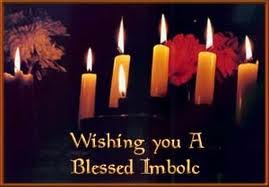I am officially calling it spring here in the Pacific Northwest. Sorry about that, other climes. We put up with a lot of rain and cloudy days, true but we get paid back in the number of days on either side, spring and fall where things grow. NOW is the time of Quickening, the fertile secret POP of life in the belly of Mother Earth.
Imbolc, St. Brigid's Day, Groundhog Day and Candlemass: They are all the same holiday!
This Wikipedia article does a good job explaining how.
Imbolc (also Imbolg), or St Brigid’s Day (Scots Gaelic Là Fhèill Brìghde, Irish Lá Fhéile Bríde, the feast day of St. Brigid),
is a Celtic festival marking the beginning of spring. Most commonly it
is celebrated on 1 or 2 February (or 12 February, according to the Old Calendar) in the northern hemisphere and 1 August in the southern hemisphere. These dates fall approximately halfway between the Winter Solstice and the Spring Equinox.
The holiday was, and for many still is, a festival of the hearth and
home, and a celebration of the lengthening days and the early signs of
spring. Celebrations often involved hearthfires, special foods (butter,
milk, and bannocks, for example), divination or watching for omens, candles or a bonfire if the weather permits. Imbolc is traditionally a time of weather prognostication,
and the old tradition of watching to see if serpents or badgers came
from their winter dens is perhaps a precursor to the North American Groundhog Day.
In the modern Irish Calendar, Imbolc is variously known as the Feast of Saint Brigid (Secondary Patron of Ireland), Lá Fhéile Bríde, and Lá Feabhra — the first day of Spring. Christians often call the day "Candlemas", long celebrated as "the feast of the Purification of the Virgin".





No comments:
Post a Comment